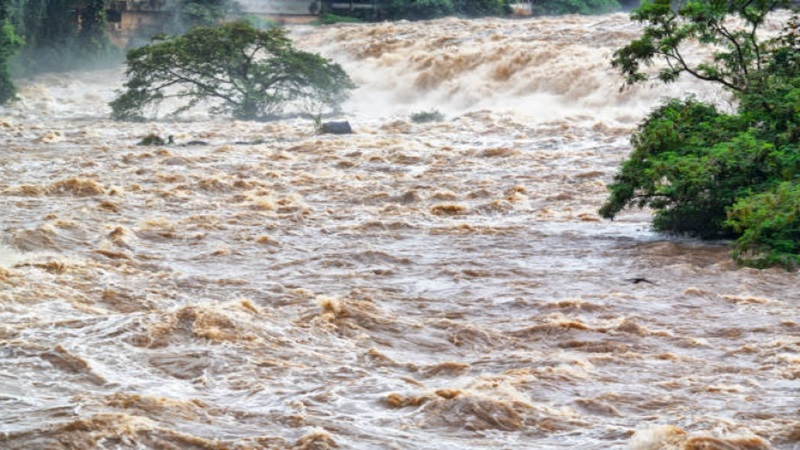
Rising Waters, Rising Concerns: Role of Government in Mitigating the Impacts of Flood in Developing Nations
Most Read Stories Today
-
Water Scarcity and Artificial Rainfall: The Positive and The Negative Effects of Cloud Seeding, including Health Hazards and Climate Implications.
-
Renewable Energy in Rural Areas: Challenges, Opportunities, and Successful Rural Projects
-
Pakistan's Agriculture at Risk Due to Climate Variability
-
South Africa's Recent Floods: Is Climate Change to Blame?
-
South Korea's floods: root causes and prevention strategies.
-
South Africa: Cape Town, A City Under Fire
-
The Human Cost of Climate Disasters
-
Our Oceans, Our Future: The South African Dilemma of Overfishing
-
Degenerative Impact of Hydrocarbons On The Environment.
-
Sustainable Urban Planning - Copenhagen and the Path to Climate Resilience
Nepal, a country in Southeast Asia, has an array of landscapes, with fertile plains in its southernmost area and majestic mountains in its northernmost region.
Nepal is an agricultural country, and it experiences the positive effects of rain, which promotes crop growth and sustains the livelihoods of its citizens. It is blessed with a variety of seasons, with summer, winter, and monsoon being the most prominent.
Despite the fact that rainfall positively influences agriculture, excessive rain can have negative effects on people's lives, properties, and environment. The most devastating events resulting from heavy rain are floods and landslides. In hilly areas, landslides pose a significant challenge, exacerbated by unplanned road construction that weakens the soil, making it more susceptible to erosion and leading to disastrous consequences. In the plains, many communities are vulnerable to flooding incidents, which damage the fertility of the soil and impact lives and properties.
Urban flooding has emerged as another critical issue. The Kathmandu Valley, a hub of business and commercial activities, has witnessed a substantial rise in unplanned urbanization, resulting in urban flash floods due to the encroachment of floodplains. Some of these floodplains have been occupied by slum areas, leaving the residents vulnerable to the direct impact of heavy monsoon rain.
It is inevitable that rainfall will increase in the upcoming years as the effects of climate change worsen, causing the nation to suffer significant losses and damages. Therefore, it is crucial that both the government and local stakeholders take action to reduce these effects. Increasing the accuracy of weather forecasts is one potential step.
An effective early warning system would result in positive and significant changes after such events because the monsoon's heavy rainfall is a natural phenomenon that cannot be stopped. With the aid of this system, people in high-risk areas could take the necessary precautions to protect themselves. It is essential to train and deploy local emergency preparedness personnel in order to accomplish this. Another action that can be taken to prevent land encroachment is the enforcement of strict laws.
Rivers cannot flow freely in urban areas because of the haphazardly built homes and the encroachment of floodplains. This causes a greater amount of concretization and a lower ability to retain water. The government should promote residential rainwater harvesting systems and offer incentives or subsidies to encourage their adoption in order to address this problem. This would increase understanding of the value of water recharge and raise awareness of the disastrous effects of ignoring it.
Furthermore, it is crucial to avoid starting projects like road construction in fragile hilly regions that are vulnerable to landslides during the monsoon season. Prior to beginning any projects in these areas, it is strongly advised that the government impose laws requiring thorough risk assessments and efficient environmental evaluations.
It is also essential to address the potential health implications associated with water-induced disasters. Flooding often leads to water-related diseases due to disruptions in the water supply system, which deteriorates the quality of water. Therefore, the government should ensure the proper supply of clean water to the affected regions, prioritizing the health and well-being of the people.
The development of geospatial technology has, in the current context, offered workable solutions for many phenomena, including environmental processes. Access to affected areas is now possible thanks to technology that would not have been possible before. Therefore, by examining rainfall rates and water discharge, the government can use this technology to develop maps of the floodplain and carry out flooding simulations and modeling.
An approach like this would shed light on how water bodies will behave in the future, how rain will affect them, and what risks there may be for nearby communities. The government would benefit from having a proactive strategy to prepare for the severe effects of water-related disasters.

Terms & Conditions
Subscribe
Report
My comments